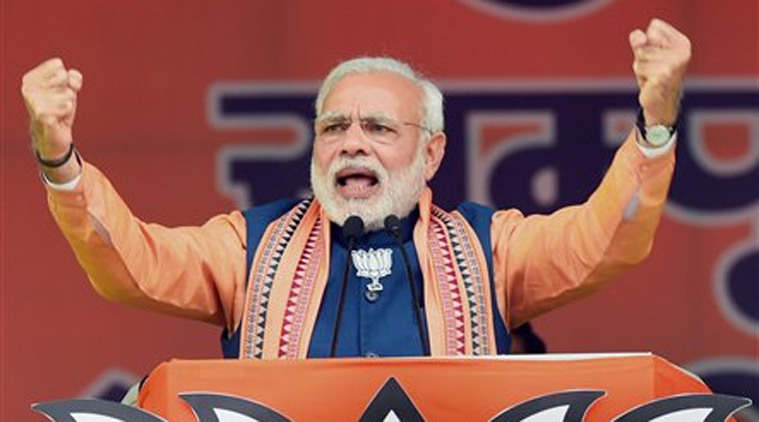Opinion BJP plus plus
With Congress being pushed out of the arena, the political contest will now be between the BJP and the regional party.
 Prime Minister Narendra Modi
Prime Minister Narendra Modi  Prime Minister Narendra Modi
Prime Minister Narendra ModiThere are dangers in overreading the scorecards of assembly elections in five states. Yet, the day after, some wider trends seem inescapable. Thursday’s results bring more confirmation that the BJP’s ambition and project of geographical expansion that picked up pace with the massive Narendra Modi victory in 2014 — Amit Shah’s BJP has resolved to build a party office in each and every district of the country, to begin with — is going strong. In 2015, it dramatically forged a partnership with the PDP, the party on the other extreme of the ideological spectrum, and became a ruling party in J&K. A year later, it has broken new ground yet again: By forming its first-ever government in the Northeast and by opening its account in Kerala. Of course, the BJP has seen significant reversals in Delhi and Bihar. But what is also evident is this: It has learnt lessons from its defeats. From Bihar especially, it seems to have learnt that it would not always pay to rely solely on Modi and bypass the local leadership and issues. In Assam, therefore, the party made Sarbananda Sonowal, a tribal leader, the face of the BJP-led alliance. In Assam, also, the BJP practically remade itself with leaders imported from other parties, including notably, Himanta Biswa Sarma from the Congress, and worked on getting the coalition math right with allies like the AGP and the Bodoland People’s front, while staying with its core ideological message.
The Congress seems to have resolutely learnt nothing from its previous debacles and defeats. As the BJP expands to new territories and acquires more layers, the Congress is shrinking. If earlier, it could be said that the BJP was more than a regional party but not yet truly a national party because of its absence from large swathes of the country, especially the south and the Northeast, it is the Congress that seems to have receded to a few regional pockets and is looking less than a national party today. Karnataka is the only large state ruled by the Congress and this predicament looks likely to continue and worsen. To be sure, the Congress still has significant vote shares in a large number of states but in the absence of an agile and alert leadership at the centre, a vivacious organisation in the states or even a basic will to power, it cannot hope to consolidate and electorally encash the support it still has on the ground.
In the foreseeable future, then, the political contest in the states and in the Centre seems to be between regional parties on the one hand, and a BJP that is a national party with a well-developed high command but which also has the political dexterity and guile to strategically regionalise itself, on the other. With the Congress progressively being pushed out of the arena, the political field is being crucially reset.


